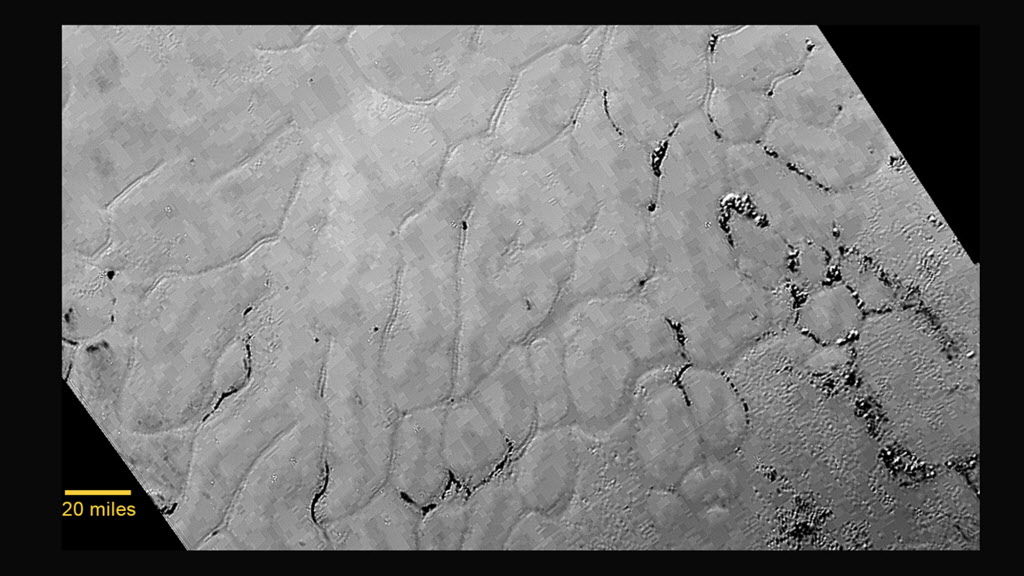Scientists expected Pluto’s surface to be pocked with craters.
Its orbit traverses the Kuiper Belt, which is filled with up to a trillion icy objects. Repeat collisions are inevitable over billions of years.
The New Horizons images, however, show miles of icy plains, untouched by collisions.
What does this mean? Well, it means something is reshaping Pluto’s surface and erasing evidence of past collisions. It could be internal (tectonic) forces or atmospheric ones.
William McKinnon, a New Horizons co-investigator from Washington University in St. Louis, said Friday that nitrogen ice is flowing from the plains into craters at the rocky edge.
“We knew nitrogen ice was there. To see evidence for recent geological activity is a dream come true.”
By recent, McKinnon said he meant “no more than a few tens of millions of years. There is no reason it can’t be going on today.”





